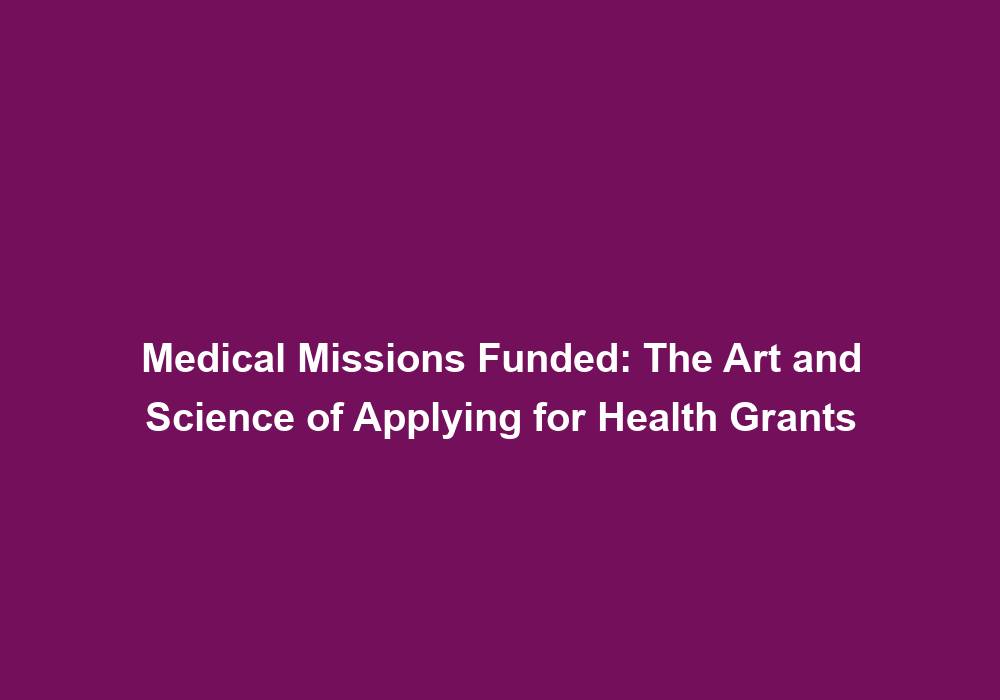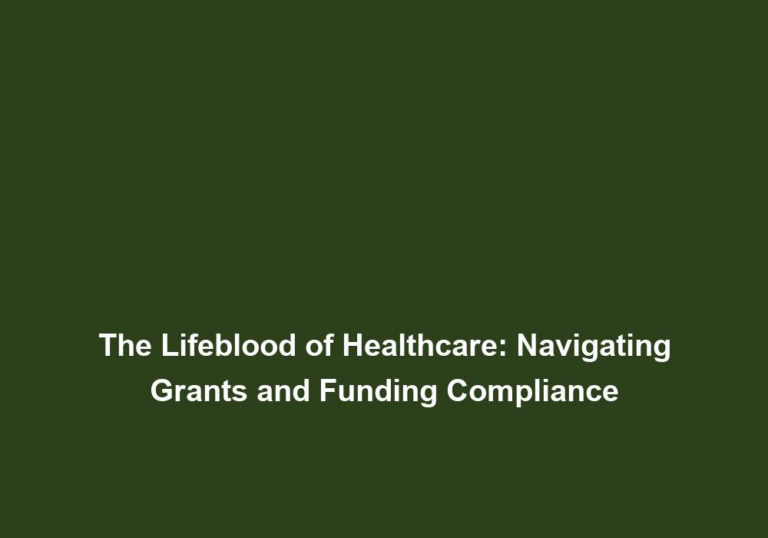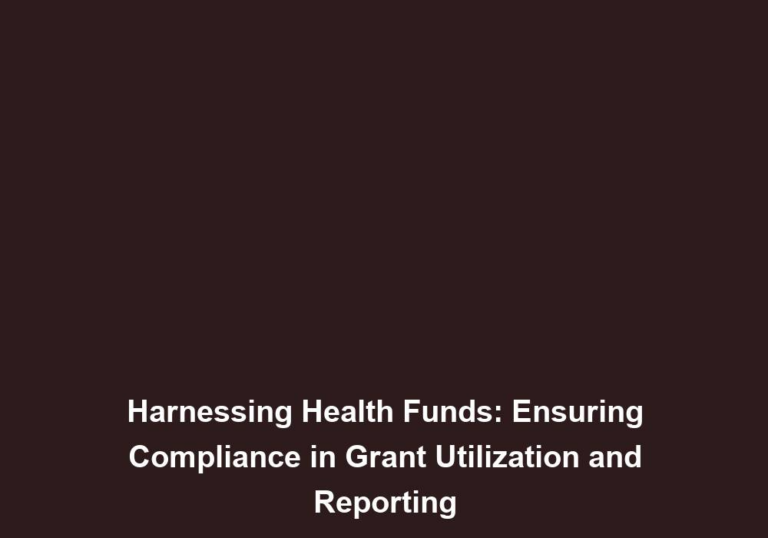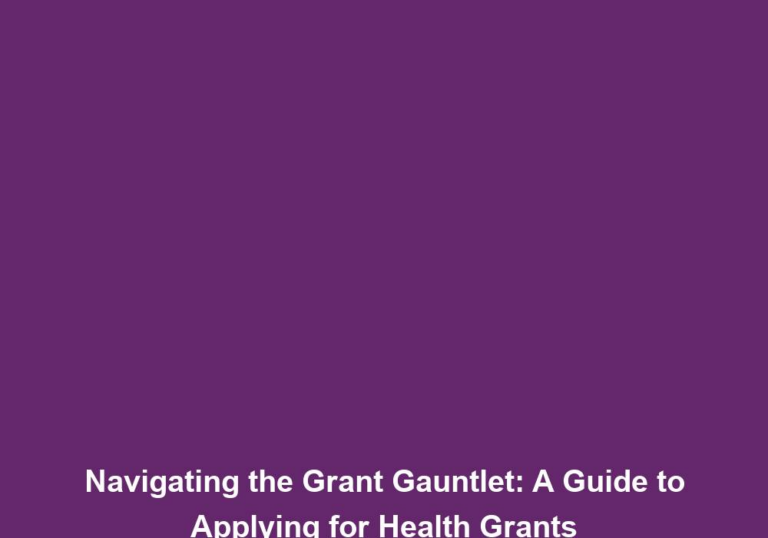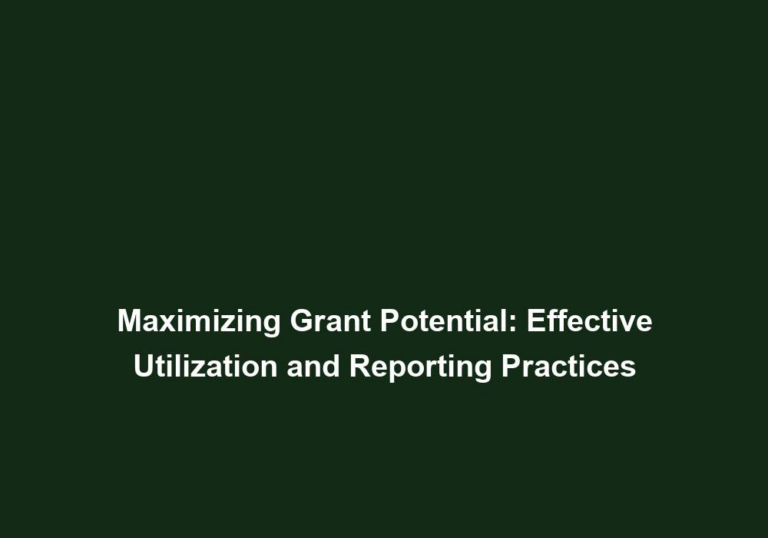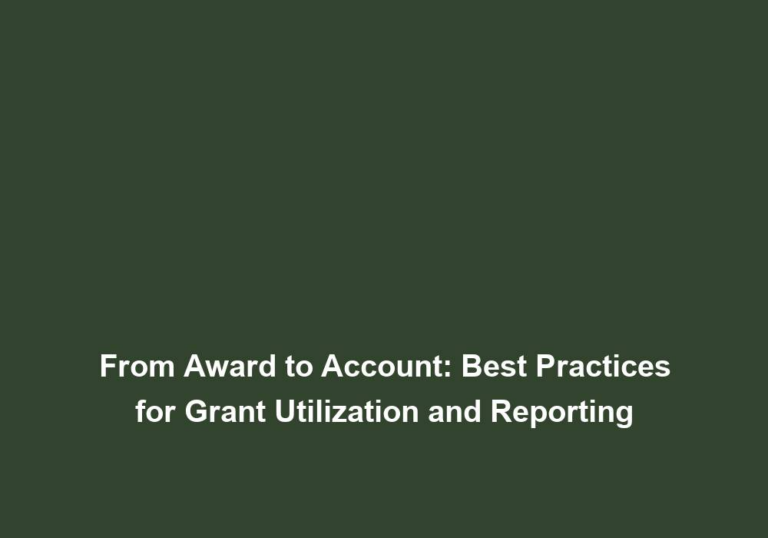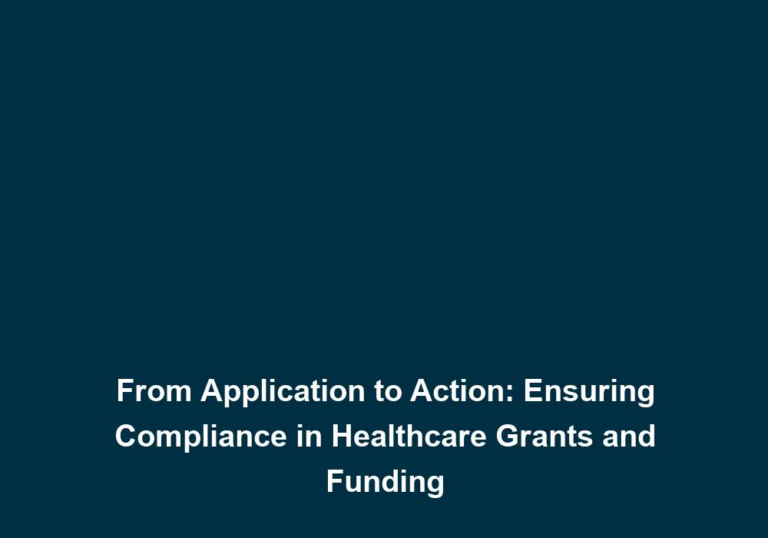Medical Missions Funded: The Art and Science of Applying for Health Grants
Medical missions play a pivotal role in providing healthcare to underserved populations across the globe. These crucial endeavors often rely on financial support to sustain their operations and make a lasting impact. One of the primary sources of funding for medical missions comes in the form of health grants. In this article, we will explore the art and science of applying for health grants, discussing essential strategies and tips to increase your chances of securing funding for your medical mission.
Understanding Health Grants
Before delving into the intricacies of applying for health grants, it is crucial to grasp the concept of what health grants entail. Health grants are financial awards provided by various organizations, including government agencies, foundations, and non-profit entities. These grants are specifically designed to support healthcare-related projects and initiatives that aim to improve the well-being of communities.
Health grants serve as a lifeline for medical missions as they provide the necessary funds to carry out their important work. These grants can cover a wide range of costs, including medical supplies, transportation, accommodation, and staff salaries. By securing health grants, medical missions can ensure the sustainability and effectiveness of their operations, allowing them to reach more underserved populations and make a lasting impact on their health outcomes.
Researching Grant Opportunities
To maximize your chances of securing funding for your medical mission, thorough and extensive research is vital. Begin by identifying organizations and foundations that offer health grants in alignment with your mission’s objectives. Consider factors such as the focus area of the grant, eligibility criteria, and application deadlines.
There are various resources available to streamline your search for health grants. Online grant databases and directories, such as Grants.gov, Foundation Directory Online, and GuideStar, provide comprehensive information on available health grants, funding amounts, and application procedures. These platforms can help you identify potential grant opportunities and ensure that your medical mission aligns with the objectives and priorities of the grant providers.
When researching grant opportunities, it is important to not only focus on large, well-known organizations but also explore local and regional grant options. These smaller grants may have less competition and can provide essential funding for your medical mission. Additionally, consider reaching out to local community foundations and healthcare organizations to inquire about any available grants or funding opportunities.
Crafting an Effective Grant Proposal
Once you have identified potential health grants, the next step is to craft a compelling grant proposal. A well-structured and persuasive proposal significantly increases your chances of securing funding. Here are some key elements to consider when developing your grant proposal:
Executive Summary
Create a concise summary that provides an overview of your medical mission, its objectives, and expected outcomes. Showcase the importance and impact of your project, highlighting how it aligns with the grant provider’s goals.
In the executive summary, clearly outline the specific healthcare challenges faced by the underserved population you aim to serve. Emphasize the urgency of addressing these needs and the potential impact of your medical mission on improving their health outcomes. Use data, statistics, and real-life stories to support your claims and demonstrate the relevance and significance of your project.
Needs Assessment
Demonstrate a clear understanding of the healthcare needs of the target population you aim to serve. Provide data and evidence to support your claims and emphasize the urgency of addressing these needs.
Conduct a comprehensive needs assessment to gather information about the specific healthcare challenges faced by the underserved population. This assessment should include data on prevalent diseases, access to healthcare facilities, and the availability of medical resources. Use this data to provide a compelling case for the necessity of your medical mission and the impact it can have on improving the health outcomes of the target population.
Goals and Objectives
Outline specific and measurable goals that your medical mission aims to achieve. Break down these goals into smaller, achievable objectives. Ensure that they align with the grant provider’s objectives and priorities.
Clearly define the desired outcomes of your medical mission and how you plan to measure the success of your initiatives. Establish quantifiable targets that can demonstrate the effectiveness of your project. For example, if your medical mission aims to reduce the prevalence of a specific disease, set a target percentage decrease and outline the strategies you will employ to achieve this goal.
Methodology and Implementation Plan
Describe the methodologies and strategies you will employ to achieve your mission’s goals. Provide a detailed timeline and explain how you will measure the success of your initiatives. A well-thought-out implementation plan demonstrates your ability to execute the project effectively.
In this section, provide a step-by-step plan for implementing your medical mission. Outline the specific activities, interventions, and services that will be provided to the target population. Include a timeline that clearly indicates the duration of each phase and the expected outcomes at different stages. Additionally, explain how you will monitor and evaluate the progress of your initiatives to ensure their effectiveness.
Budget
Develop a comprehensive budget that outlines the estimated costs of your medical mission. Include all necessary expenses, such as medical supplies, transportation, accommodation, and staff salaries. Ensure that your budget aligns with the funding requirements specified by the grant provider.
In the budget section, provide a detailed breakdown of the anticipated expenses for your medical mission. Be as specific as possible, accounting for all necessary costs and potential contingencies. Include quotes or estimates from suppliers or service providers to support the accuracy of your budget. Remember to align your budget with the funding guidelines provided by the grant provider, ensuring that you do not exceed the maximum funding limit.
Evaluation and Sustainability
Discuss how you will evaluate the impact and effectiveness of your medical mission. Highlight the steps you will take to ensure the long-term sustainability of your initiatives beyond the grant period. Grant providers are often interested in supporting projects that have a lasting impact.
In this section, outline your plans for evaluating the impact of your medical mission on the target population. Explain the metrics and indicators you will use to measure success and the frequency of evaluation. Additionally, discuss your strategies for ensuring the sustainability of your initiatives beyond the grant period. This can include establishing partnerships with local healthcare organizations, training local healthcare providers, or implementing community-based initiatives that can continue even after the grant funding ends.
Strengthening Your Application
Apart from developing a compelling grant proposal, there are additional measures you can take to strengthen your application:
Collaborations and Partnerships
Establish collaborations and partnerships with local healthcare organizations, universities, or community leaders. These alliances not only enhance the credibility and impact of your medical mission but also demonstrate a multi-faceted approach to addressing healthcare challenges.
By partnering with local healthcare organizations, universities, or community leaders, you can leverage their expertise, resources, and networks to strengthen the implementation and impact of your medical mission. These collaborations not only enhance the credibility and effectiveness of your project but also demonstrate a community-driven approach to addressing healthcare challenges. Highlight these collaborations in your grant proposal to showcase the comprehensive and collaborative nature of your medical mission.
Demonstrating Community Support
Highlight the support and involvement of the local community in your medical mission. This can be done by providing testimonials, letters of support, or documenting community engagement activities. Grant providers value projects that have strong community backing.
Demonstrate the active involvement of the local community in your medical mission by providing testimonials or letters of support from community leaders, patients, or beneficiaries. These testimonials can illustrate the positive impact of your previous work and the community’s trust and support in your project. Additionally, document any community engagement activities, such as health awareness campaigns or training programs, to showcase the community-driven nature of your medical mission.
Showcasing Past Successes
If you have previously conducted successful medical missions, emphasize these accomplishments. Provide data and testimonials that showcase the positive outcomes and impact of your previous projects. This evidence strengthens your credibility and increases your chances of securing funding.
Highlight the success stories and positive outcomes of your previous medical missions to demonstrate the effectiveness of your approach. Provide data, statistics, and testimonials from patients, healthcare professionals, or community leaders to support your claims. This evidence strengthens your credibility and shows grant providers that your medical mission has a track record of making a tangible impact on the target population.
Building Relationships with Grant Providers
Developing relationships with grant providers is essential for long-term funding sustainability. Attend conferences, workshops, and networking events related to healthcare and grant funding. Engage in conversations with representatives from grant organizations to understand their priorities and potential opportunities for collaboration.
Building strong relationships with grant providers can increase your chances of securing funding and open doors for potential collaborations in the future. Attend conferences, workshops, and networking events related to healthcare and grant funding to connect with representatives from grant organizations. Engage in meaningful conversations to understand their priorities, funding cycles, and potential opportunities to align your medical mission with their objectives. Maintain regular communication to stay updated on any new grant opportunities or changes in funding guidelines.
Conclusion
Applying for health grants requires a well-structured approach and a strong understanding of the grant application process. By conducting thorough research, crafting compelling grant proposals, and strengthening your application through collaborations and community support, you can increase your chances of securing funding for your medical mission. Remember, persistence and dedication are paramount in the pursuit of health grants, as they play a vital role in enabling medical missions to provide essential healthcare services to those in need.

